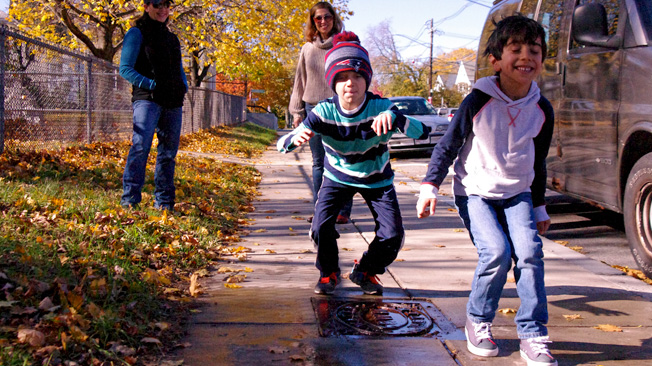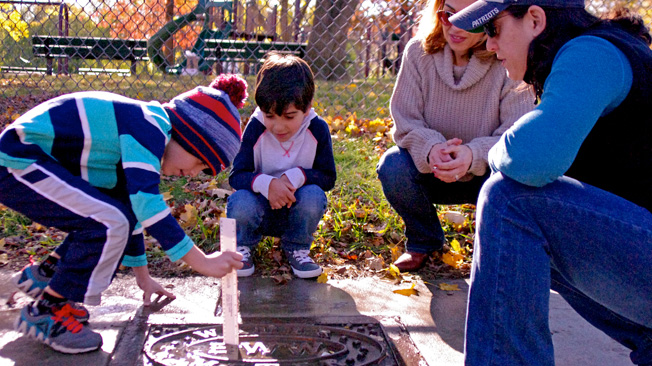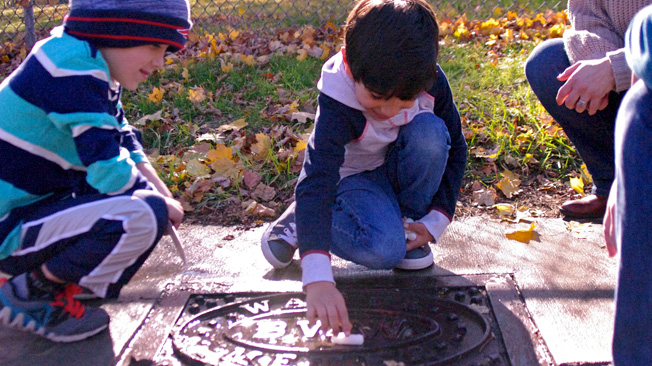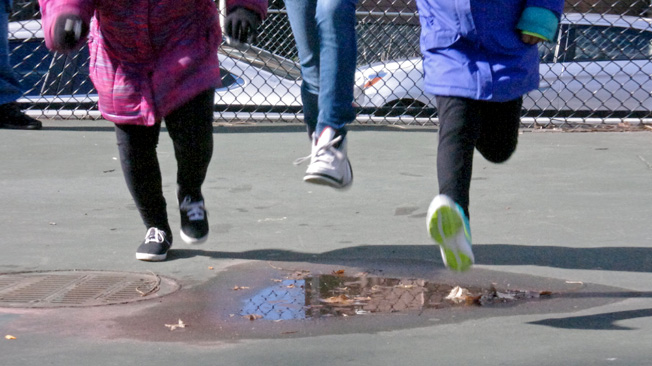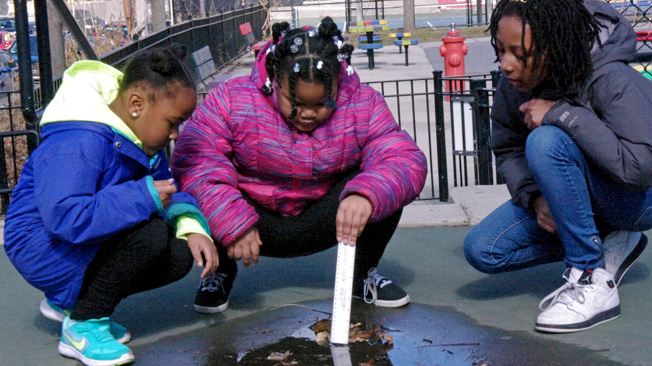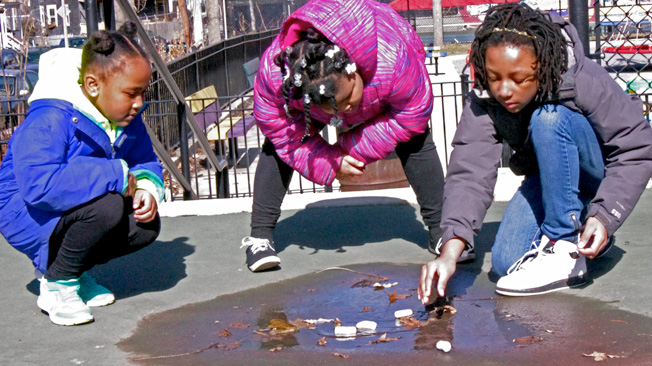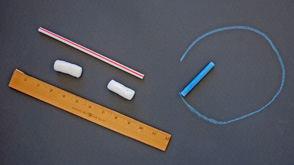Splash and Dry
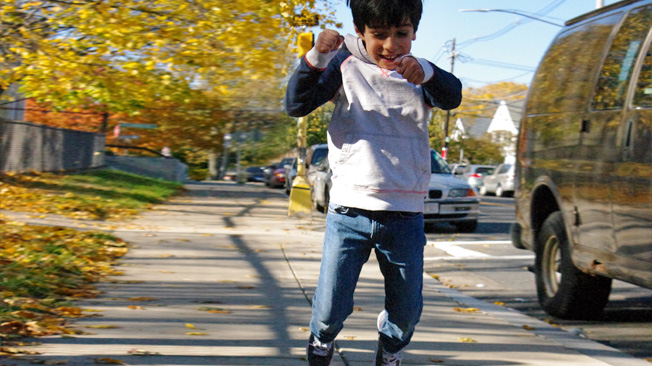
What Is This Activity?
Where does rain make puddles and how fast do they disappear? You and your child will love making puddle water swirl, ripple, splash, and flow as you explore the fastest way to dry up a puddle.
Introduction
Go Outside 45 minutes
- Start with this Puddle Jump challenge to get an idea of a puddle's size: Can you and your child jump over every puddle in a play area? Ask: Why don't some spots have puddles? (Puddles form in low spots where the water can't flow downhill or soak into the ground.)
- Choose a large puddle and let your child explore it freely for a few minutes:
- Measure the depth with a ruler, stick, or boot.
- Make a mini-whirlpool and drop in the toy.
- Make the surface ripple. (Tip: Blow through the straw.)
- Make a current. (Tip: Move the stick or a hand back and forth in the water.)
- Make the toy cross the puddle without you touching it, using ripples or currents.
- Outline the puddle with chalk. (Optional: Take a picture of it as a "before" shot. If you have an older child, they could be the puddle photographer.)
- Find another puddle as far from the first puddle as possible. If your child has boots, challenge him or her to empty out this puddle as fast as possible. It's not easy! Jumping with both feet? That will splash out some water, but not all of it. Pushing it with the stick? Some of it flows around the stick and stays in the puddle. Outline this puddle with chalk. (Optional: Take a "before" picture.)
- Find more puddles and ask your child to predict: Which puddle will dry up first? Next? Last? Why? Number the puddles with chalk. Then draw chalk outlines around the remaining puddles. (Optional: Take more "before" pictures of the puddles.)
- Revisit the puddles in the next couple of days—or in a few hours if it's really hot—to check on their size, depth, and clarity. Take "after" pictures on each visit and compare the changes in the puddles. Were your child's predictions right? Wonder aloud: What makes some puddles dry up faster than others? (Shallow water, smaller volume of water, more sunlight, more wind, people walking through them, animals drinking them, etc.)
Explore Some More
Rain Jump
If you have a jump rope, you and your child can take turns doing a "Rain Jump." On each turn, the jumper chants this rhyme, substituting new city or town locations for the ones that are underlined:
Rain on the sidewalk, rain on the tree.
Rain on the roof, but not on me!
The Hidden Alligator Mystery
Are there really alligators under the city? Watch this short video in which Clem and Brad take a wild ride through a city's storm drainage system to find out.
Build a Rain Barrel
Watch this short video to see how kids collect rainwater for watering plants.
Outdoor Family Fun with Plum App
This app gets families outdoors exploring the world. Every day, the app offers five outdoor missions to get everyone thinking and talking about nature and the science that's all around us.

